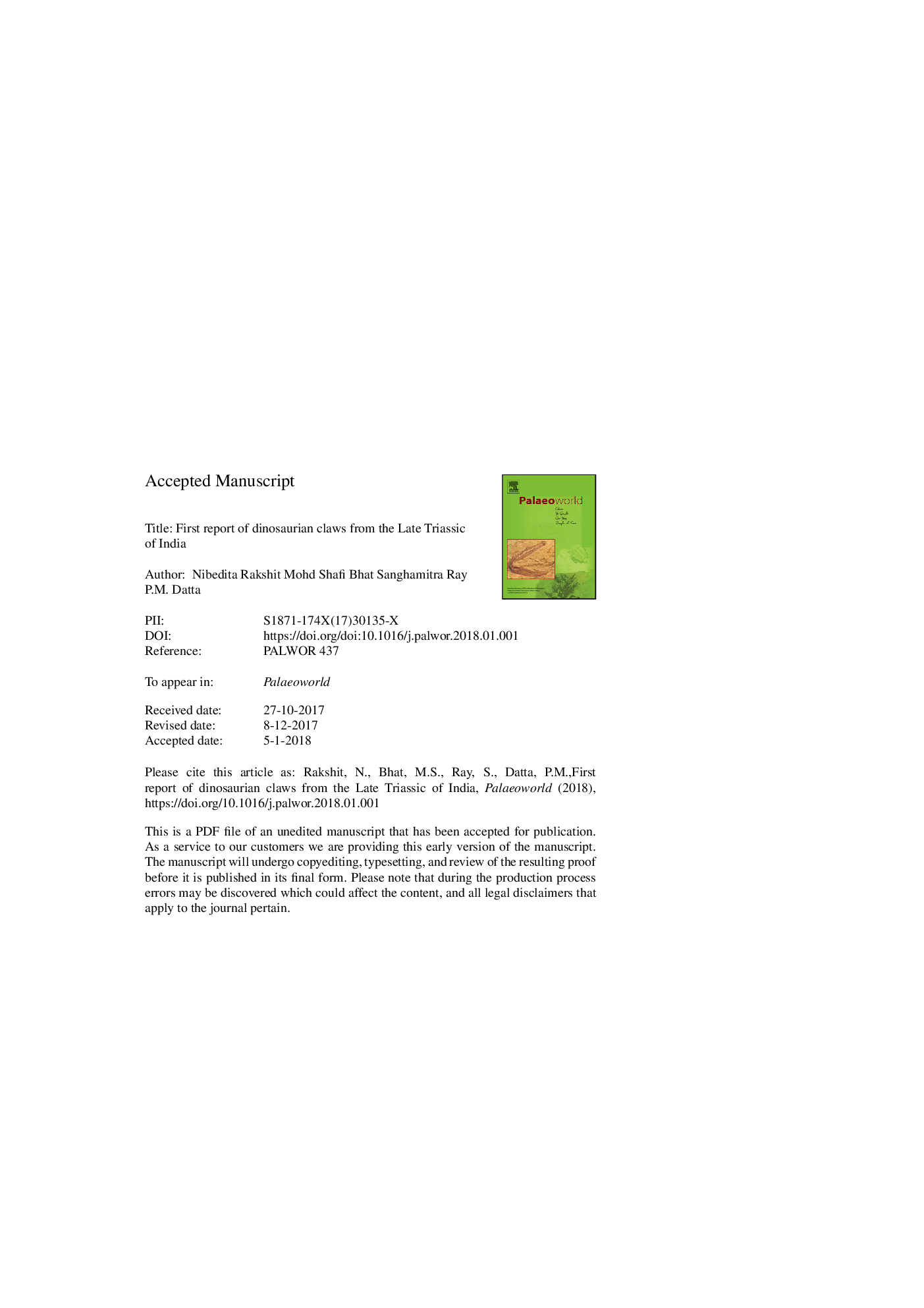| Article ID | Journal | Published Year | Pages | File Type |
|---|---|---|---|---|
| 8916542 | Palaeoworld | 2018 | 25 Pages |
Abstract
The Late Triassic Tiki Formation has yielded five isolated nearly complete claws or ungual phalanges from a fossil locality, which are described in detail and compared with other Late Triassic tetrapods. Of these, four ungual phalanges are slender, asymmetric, ventrally recurved, transversely compressed, and contain deep collateral grooves on either side, a low median keel on the proximal articular surface and a prominent proximoventral flexor tubercle showing their high similarity to the theropod dinosaurs. The remaining claw is unlike that of any theropods in terms of high robusticity and near symmetry. However, as in dinosaurs it is ventrally recurved and contains deep lateral grooves, a small flexor tubercle, lateromedially extended proximal articular surface with a distinct median keel and is considered as belonging to an indeterminate dinosaur. Although it is not possible to ascertain whether the unguals belong to a single taxon or multiple taxa, this new find points towards the presence of small dinosaurs in the Late Triassic Tiki fauna.
Related Topics
Physical Sciences and Engineering
Earth and Planetary Sciences
Palaeontology
Authors
Nibedita Rakshit, Mohd Shafi Bhat, Sanghamitra Ray, P.M. Datta,
